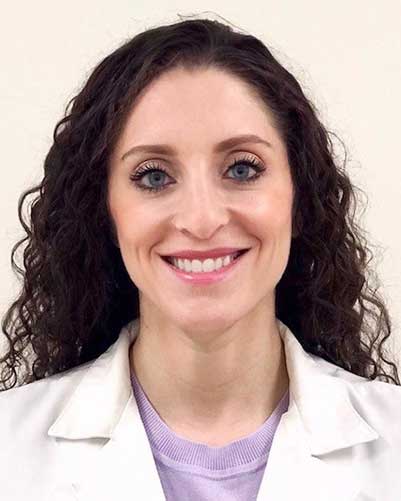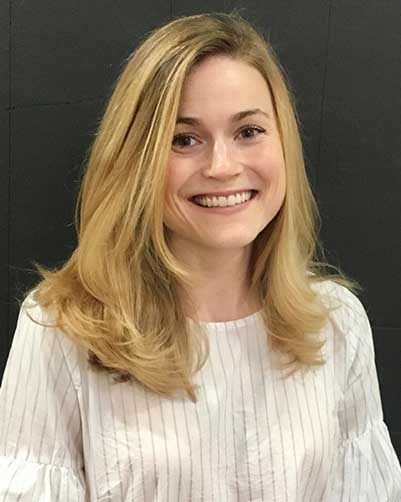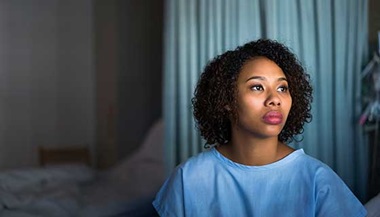Atypical Ductal Hyperplasia (ADH)
Featured Experts
-
Erica Campanaro, M.S., F.N.P.-C

-
Emily Brown, M.S., F.N.P.-C.

Atypical ductal hyperplasia (ADH) affects the cells of the milk ducts in the breast. Breast surgery specialists/nurse practitioners Erica Campanaro and Emily Brown explain the condition, its relationship to breast cancer and what you should do if you are diagnosed with it.
What You Need to Know
- If tests confirm you have atypical ductal hyperplasia in one or both of your breasts, your doctor will want to follow your breast health very carefully.
- Atypical ductal hyperplasia cells can evolve to become ductal breast cancer. Multiple areas of ADH in the breast and certain genetic characteristics further increase the risk of the ADH becoming cancer.
- A comprehensive breast center can help you better understand ADH and your individual risk for developing breast cancer.
- Women with ADH do not need — and should not undergo — a voluntary preventive (prophylactic) mastectomy.
What is atypical ductal hyperplasia?
To better understand the pathophysiology, imagine looking through a normal duct in the breast like a hollow tube. In a normal and healthy duct, you see uniform and orderly cells growing next to each other in a single layer lining the inside of the duct.
When something stimulates those cells to proliferate and they become disorganized, grow without control, create multiple layers and change their shape, they’re called atypical. “Being diagnosed with atypical ductal hyperplasia does not mean you have cancer,” Campanaro says. “Rather, it is considered a marker for the future development of breast cancer and carries a 30% lifetime risk.”
Brown says, “For reasons we do not fully understand yet, the cells in your breast can become stimulated to grow disorganized and disorderly. If your breast makes a marker lesion like ADH, it means that same microenvironment can make cancer, too.”
Symptoms of Atypical Ductal Hyperplasia
There are no symptoms specific to ADH. The condition might be discovered when you are being seen or tested for a problem with your breast such as pain, a lump or discharge.
How is atypical ductal hyperplasia diagnosed?
A breast biopsy, which is usually done to evaluate an abnormality seen on imaging or during a physical exam, can reveal atypical ductal hyperplasia.
If a core biopsy reveals you have ADH, your doctor will most likely recommend an excisional biopsy to collect more tissue and rule out any associated malignancy.
What is the treatment for atypical ductal hyperplasia?
After the excisional biopsy, close breast surveillance is usually recommended. Finding a provider who specializes in breast health is important to ensure you are getting the appropriate follow-up care. In addition, there are risk-reducing strategies that your breast care specialist will discuss with you.
“A patient diagnosed with atypical ductal hyperplasia should be followed in a high-risk breast clinic,” says Campanaro. “A high-risk breast clinic focuses on high-risk screening, risk-reducing strategies and lifestyle modifications to help reduce the patient’s overall breast cancer risk. Many patients with ADH join our high-risk clinic programs, available at both The Johns Hopkins Hospital and Sibley Memorial Hospital.”
Breast and Ovarian Surveillance Service
At the Johns Hopkins Breast Center, many patients with ADH join our high-risk clinic program, the Johns Hopkins Breast and Ovarian Surveillance Service (BOSS). The program focuses on ways to reduce the risk of developing breast cancer and provides tools to help women manage the knowledge that they are at higher risk.
Will I get breast cancer if I have ADH?
If you’ve been diagnosed with ADH, you have an increased risk of developing breast cancer in the future. Specifically, at five years after the diagnosis of ADH, 7% of women will develop breast cancer, and at 10 years post-diagnosis, 13% of these women will develop breast cancer.
“Over time, if enough atypical cells encroach upon the duct’s empty space so it expands past a certain threshold, or if two adjacent ducts contain ADH, then the pathologist labels it breast cancer,” says Brown.






